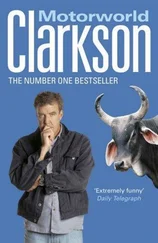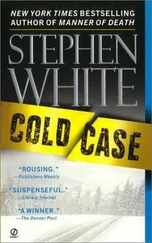This is something Europeans like. American testers found that on a track, if you pushed it, there was a lot of understeer, but I fail to see how this is possible. Yes, the R8 GT is four-wheel drive, and that is usually a recipe for the nose to run wide. But so little power is sent up front, and the chassis is so good, I found that, if anything, it was the other way around. It was the back that stepped out of line. We Europeans like that, too.
Then there’s the engine. This is a 5.2-litre Lamborghini-based V10 that has been fettled so that it now produces 552 horsepower. And it’s power that all comes in a rush near the top of the rev band. That encourages you to hang on to each gear as long as possible, and that in turn unleashes a soundtrack that’s totally at odds with the featherweight feel of the car. You expect it to howl, or shriek. But it bellows – a deep, low, frightening sound. It’s fantastic.
So’s the ride. So’s the driving position. So’s the way Audi has sensibly left most of the luxury equipment on board rather than follow Porsche’s lead by taking it all out. And then charging you to put it back.
My only real gripe with this car is that the single-clutch flappy-paddle gearbox is a bit dim-witted. And maybe £152,000 is a bit much when for a little bit more you could have a Ferrari 458. Which is a tiny bit better.
8 January 2012
Amazing where bottle tops and string will get you
Hyundai i40 1.7 CRDi 136PS Style
Back in the mid-1960s a South Korean construction company called Hyundai decided it would like to start making cars. With the financial muscle of Manchester City, it could have employed anyone to lead this new venture, but, for reasons that are not clear, the man it eventually selected was an Englander called George Turnbull.
George had made a name for himself as managing director of Austin Morris, where he had steered the Morris Marina from what must have been a drunken doodle on the back of a beer mat into what passed in the Midlands back then for ‘production’.
Rather than work with Koreans, who obviously wouldn’t know a shock absorber from a stick of rhubarb, George brought with him a team of other Englanders, including the man who’d designed the chassis of Princess Anne’s car of choice, the Reliant Scimitar.
The car they created was called the Pony – rhyming slang, probably – and apparently it was exported to Britain, although I don’t remember hearing about it, seeing one or having met anyone who had decided that their life was incomplete without an oriental Marina on the drive. Certainly I never had a picture of it on my bedroom wall.
No matter. Thanks to healthy sales in motoring meccas such as Egypt and Ecuador, it was a success, and even though Mr Turnbull had gone off by this stage to make Hillman Hunters in Iran, among other things, Hyundai launched a replacement model. Through a lack of imagination, this too was called the Pony and was described in the brochure as having ‘rectangular halogen headlamps’ and ‘easy-to-read gauges’.
The company was reduced to mentioning these rather trifling things because there really wasn’t much else of note. I drove this car way back, and still, even to this day, I can recall the horror. Everything from the vinyl upholstery to the ungainly exterior styling was hideous, and, worse, none of the components seemed to be joined up.
There was a lever that sprouted out of the floor, but using it to engage a gear was so hard that by the time you found something that felt promising, the car had coasted to a halt and you faced the prospect of trying to find first again.
I believe that the gearlever was connected to the box with string. And that the steering column ended up in a big box of yogurt. If you twirled it fast enough, the yogurt would spin and centrifugal force would eventually cause the front wheels to change direction. Often one would go left and one right, but you usually didn’t notice, partly because you were too exhausted by twirling the wheel and partly because, by this stage, you’d have run over a small piece of grit and your back would have broken.
Then there was the engine. Oh dear. I distinctly remember thinking after just a few miles, by which time I’d reached 6 or 7 mph, that oil was a much better lubricant than the garden furniture Hyundai had plainly decided to use instead. The only good news was that you could never reach a high-enough speed to be worried by the fact that the brakes were made from old milk bottle tops and didn’t work.
What more could we have expected, though? Asking Korea to make a car at this time was like asking the residents of a sink estate in Algeria to make a space shuttle today. It’s not going to end well, especially if you employ the father of the Morris Marina to help out. And yet somehow it has ended well, because here we are, several decades down the line, and while many European and American car companies have foundered, Hyundai has become the fifth-biggest car maker in the world.
Its latest offering is called the i40 and it’s not bad at all. It’s similar in size to a Vauxhall Insignia and Ford Mondeo, although it is better-looking and, if you go for the eco-models, just as economical. It’s also a tiny bit cheaper, but gone are the days when a ‘made in Korea’ tag meant huge savings. You pay European prices these days because the cars are just as good.
The diesel engine in my test car was not enormously refined but it managed to pump out plenty of horsepower while not suffering from a prodigious thirst. The steering’s a bit odd, but at least when you turn the steering wheel, both front wheels turn in the same direction. And when you press the brake pedal, you slow down. There are no surprises, nasty or otherwise. The interior feels as if it were made by Honda. The suspension is conventional. The gearbox is unremarkable.
Hyundai said that when it was designing the i40, it took as its benchmark the Volkswagen Passat and Toyota Avensis. And that’s what it has ended up with: an inoffensive, odourless blend of the two. It is just ‘some car’. And as a tool it’s absolutely fine. Which is why, of course, it’s not fine at all.
In the olden days, when Korea was a war, not a country, everyone had a four-door saloon. We viewed anything with a hatchback as being rather suspicious, and perhaps even a bit French. Nowadays, though, the market for conventional saloons has all but gone. We like our cars to be tall or big or roofless or made to look like something from the 1950s. We like them to be interesting, so conventional front-drive turbodiesel saloons just don’t cut it. They’re like going out in M&S trousers.
It takes a special kind of dullard to look at the wealth of possibilities in the land of internal combustion and say, ‘Yes. I want a four-door saloon.’ And it takes an even more unusual soul to say, ‘And the four-door saloon I want is a Hyundai i40.’
The biggest problem is that all the great car companies were founded by a single man with a vision. Colin Chapman, Enzo Ferrari, Sir William Lyons and so on. Hyundai, on the other hand… Well, it was started by a man called Chung Ju-yung, who was born in what’s now North Korea, into extreme poverty. It was the Four Yorkshiremen sketch, and then some. On one occasion he managed to raise enough for a train ticket out of his village only by nicking a cow from his dad and selling it.
Later, in the big city, he drifted from job to job – one minute a docker, the next a handyman. Eventually he started a car-repair workshop, but during the war the Japanese colonial government merged his fledgling business with a steel company. And that was that. Mr Chung ended up back where he’d started. In a rural village in the north, with a dad who had no cow.
When the war ended, he started a construction firm he felt would be able to help out with the rebuilding needed. He was right, and today Hyundai is a multinational conglomerate. And its car business makes Mercedes-Benz look like Plymouth Argyle. One factory alone is capable of making 1.6 million vehicles a year.
Читать дальше












